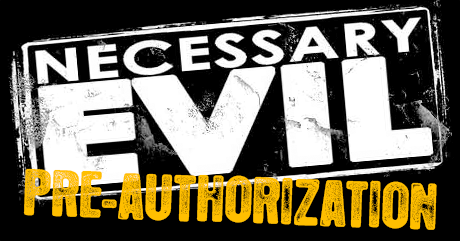The Power of the “Pre-Auth”!
Necessary Evil!
The American healthcare picture has increasingly become more complex. The advent of the Affordable Care Act and other changes have ushered in literally thousands of new healthcare insurance coverage options. These options change all the time and each year new plans with new rules and requirements spring up.
 Arising within the new healthcare landscape has been the necessary evil called the “Pre-Authorization.”
Arising within the new healthcare landscape has been the necessary evil called the “Pre-Authorization.”
Medical Transportation
We will refer to “medical transportation” throughout this post.
Our reasoning is simple.
Not all transportation for medical reasons is conducted in an ambulance. While our billing office is heavily devoted to ambulance billing, we also work on behalf of a number of clients that provide transportation by other methods including wheelchair vans and vehicles outfitted to transport persons on stretchers that are not ambulances, most commonly referred to as stretcher vans.
Pre-Authorizations issued by insurance companies can affect reimbursements for ambulance transportation and other modes of transportation alike and affect the non-emergency/routine transport side of your line of business. Emergency/9-1-1 trips are not affected by these rules in almost all scenarios.
What is a Pre-Auth?
Like the name suggests, a pre-authorization is a form of approval that the described mode of transportation is acknowledged by the patient’s insurance company that they are aware that the transportation is to take place.
It is important to understand that while for some insurances, the pre-authorization is also a notification that reimbursement will follow the transport; for other payers that may not be the case.
We find that many insurance companies will represent in the “fine print” that the pre-authorization is not a guarantee for payment. Those insurance companies provide written guidance that the pre-authorization, while a required step on the path to receiving payment, is only one piece to the reimbursement puzzle. Their guidance will further outline that the ambulance patient care report or the report submitted documenting the transportation must verify that the transportation has taken place and provide details of that transportation scenario.
For the ambulance, the guidance will extend to explain that a Patient Care Report must be submitted along with the claim to prove that the patient met the insurance plan’s medical necessity guidelines.
Beware!
Beware! Not all pre-authorizations are created equal.
There have been numerous times that our EMS agency clients have submitted a PCR to our billing offices accompanied by a pre-authorization number which has been issued by the patient’s insurance and provided by a sending healthcare facility.
However, the pre-authorization provided was obtained by the facility for their services. We later learn that the pre-authorization was never intended for the transportation of the patient only for the services provided at the facility. Subsequently, the claim is rejected for payment as the insurance payer is representing that they were unaware of and did not sanction transport based on the pre-authorization provided to the facility.
In other cases, one pre-authorization covers all services provided to the patient including transportation.
How do you know what is accurate?
Ask!
Unless you specifically verify (preferably in writing) the services covered under the pre-authorization, you may not know for sure if transportation is included.
Who obtains the pre-auth?
In almost all cases and with few exceptions, it is important that the pre-authorization is obtained by the EMS agency that will be providing the transportation service.
Of course, there are variations to this rule as there are times as explained above that a facility may be granted a blanket pre-authorization. But, it is important for the EMS agency to secure a pre-authorization that is specifically intended to cover the patient’s transportation.
Additionally, the very presence of the “pre-“ in pre-authorization denotes that the approval should be obtained prior to the transport. We strongly recommend that the pre-authorization be obtained in writing (fax, e-mail, carrier pidgeon…) and be included with the supporting documentation when the PCR is presented to your billing office. Your billing office, unless in-house and part of the pre-trip scenario, cannot request and obtain a pre-authorization after the fact.
Know Your Payers!
The key to successfully navigating the pre-authorization maze is to know your payers well.
Learn the rules and expectations of the major insurance players in your market.
If your EMS agency is a participating provider be sure that you are aware of the pre-authorization rules for the plan you are participating with. Be certain that you read the participation agreement carefully before joining the network so you can educate your staff on the expectations.
Develop Standard Operating Procedures for your call-intake and administrative staff to follow so all persons in the loop understand how to request and successfully obtain a pre-authorization prior to scheduling the transport.